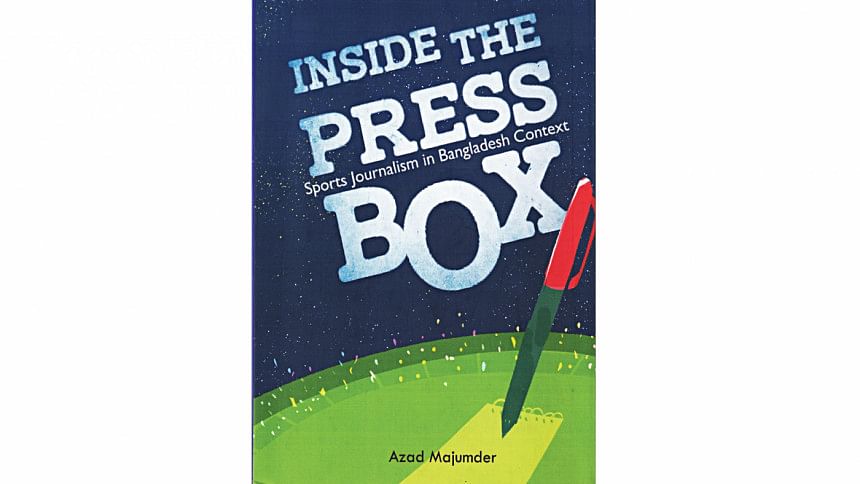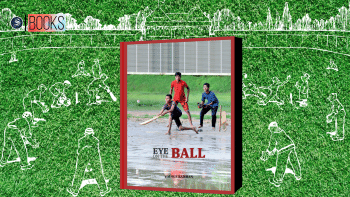Sports journalism and Bangladesh

I
Textbooks in Bangladesh tend to be written by foreign authors. Those that are written by Bangladeshi authors, emphasise on examples in a non-Bangladesh context. This constraints learning. There has been a longstanding demand for textbooks that fill this void.
The sub-title, 'Sports Journalism in Bangladesh Context' puts into perspective under what genre, Inside the Press Box falls. And who the main audience could be.
The author, Azad Majumder, has been involved in journalism since 1997, while he was a student in the Department of Journalism at the University of Dhaka. Later, he took up journalism as a profession and specialised in sports journalism. Majumder's entrance into the world of journalism came at a watershed. Journalism was going through a technological transition from print to online and audio-visual media.
Having seen and gone through this technological change, Majumder's recent book is pragmatic. It combines old-school and new-school methods. It is relevant for those who want to take journalism and sports journalism as a profession. The book is also relevant for sports enthusiasts who want to spot a good report from the many that circulate in the social media that create more noise than sound.
II
Inside the Press Box: Sports Journalism in Bangladesh Context is an 85 page text that is divided into 12 chapters. A glance at the chapter titles gives an inkling that the book is a 101 course in the fundamentals of journalism.
Azad Majumder goes back to the basics. He asks time-tested questions that are still relevant today. Majumder starts the book by asking the question: what constitutes a good sports report? He then goes on to ask, why does a reporter need to be careful about sources and references? How does a sports journalist conduct an interview and a press conference? Depending on which section of a news portal a piece of news will find itself, how does a journalist present the news?
In the next part, Majumder explores investigative journalism, and the use of data in reporting. He then goes on to explore objectivity, ethics, and nationalism in sports journalism.
In between these two parts, the author includes a chapter that addresses the challenges of new media in online and audio-visual journalism.
Majumder emphasises two time-tested methods. The first is a foundation of rhetoric, the Hermagoras of Temnos Principle of asking the five Ws: who, what, when, where and why, and then how? The second is John Reith's foundation of the purpose of the BBC, to inform, educate and entertain. All journalism ultimately reaches wide and diverse audiences. Good journalism therefore needs to combine academic elements with non-academic finesse.
The reader gets a takeaway message that mastery of these old-school and new-school methods over the topics in the chapters covered will improve professionalism of sports journalism and journalism.
III
The book stands out for its lavish anecdotes. Here, Majumder does justice to sports in Bangladesh. It is refreshing to see that cricket does not overpower other sports.
Students of journalism will get an academic presentation of basic topics of a 101 journalism course. The reader (sports enthusiast) will be educated on the background stories related to these academic topics in the context of Bangladesh. On a side note, the book is also a short journey into different sports in Bangladesh.
Inside the Press Box will encourage sports journalists in Bangladesh to develop professionalism in a budding field. It will help sports enthusiasts navigate their way in social media where many posts are posted in irrelevant contexts to become viral. Explaining academic topics in sports in a Bangladesh context is a new initiative. The book has the prospect of encouraging people from journalism and other professions to stop and ask if they can do something similar.
Asrar Chowdhury is a Professor of Economics at Jahangirnagar University. He has been contributing to The Daily Star since 1993. Email: [email protected].

 For all latest news, follow The Daily Star's Google News channel.
For all latest news, follow The Daily Star's Google News channel. 









Comments